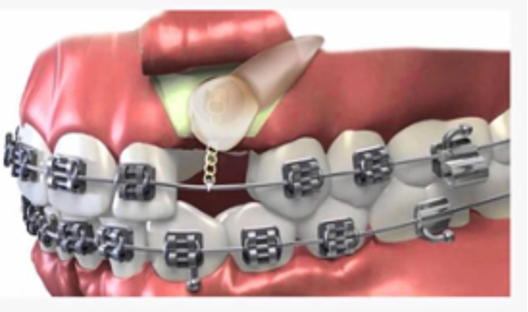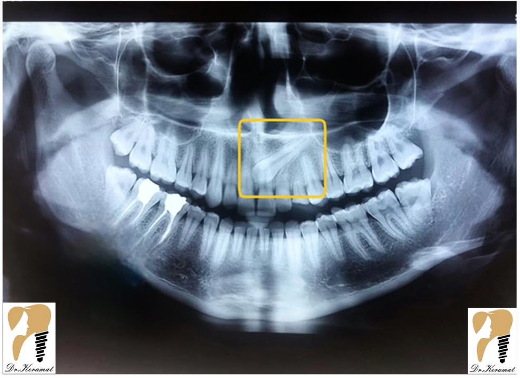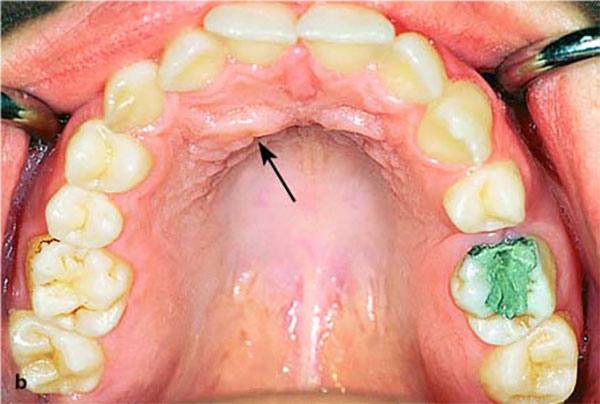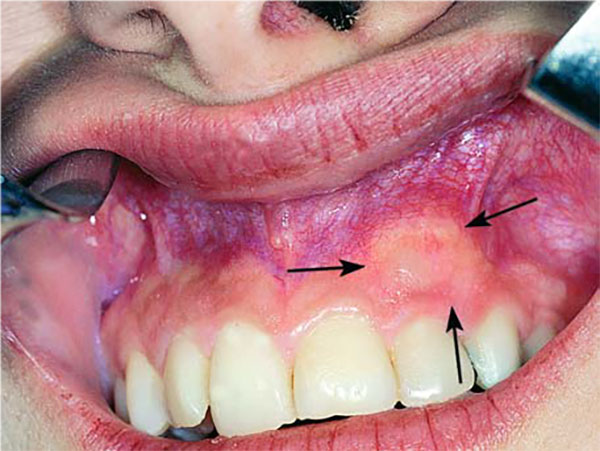Impacted canine tooth surgery
Implantology, or the surgical treatment of impacted canine teeth, is one of the most specialized and complex procedures in dentistry. It requires extensive knowledge in both oral and maxillofacial surgery as well as orthodontics.
There are various treatment options available for impacted canines. Some treatments are performed solely by an oral and maxillofacial surgeon, while others require collaboration between an orthodontist and a maxillofacial surgeon.
Impacted teeth can be located in different areas within the mouth. Among the most common types of tooth impaction are impacted wisdom teeth and impacted upper canines. Impacted wisdom teeth are the most commonly seen type and may require surgical removal when necessary. In this article, we will explain all aspects related to the diagnosis and surgical treatment of impacted canine teeth.
Diagnosis of Tooth Impaction
Usually, individuals who come in with impacted canines still have their baby (primary) canine in place. They visit the dentist due to decay in the primary tooth or because it has not fallen out naturally, and during the examination, the impacted permanent canine is discovered.
Another scenario is when patients come in due to noticing a visible bump on the palate or lip area. Alternatively, parents or a child’s dentist may notice that the permanent canine has not erupted and refer the patient to a specialist in oral surgery or orthodontics for treatment. Orthodontists usually recommend that children undergo a full radiographic evaluation around the age of 7 to monitor dental development and detect any abnormalities.
The main reason for canine impaction is typically insufficient space in the dental arch. To create enough room, patients may be referred to an orthodontist for treatment using palatal expanders or other orthodontic devices.
Factors Affecting the Treatment of Impacted Canines
Several factors influence the treatment approach for impacted canines, including:
The patient’s age
The location of impaction (labial or palatal)
The angle and depth of impaction
The amount of available space within the dental arch
Common Treatments for Guiding an Impacted Canine into the Dental Arch
Some common treatment methods include:
Extraction of the primary canine
Creating eruption space through orthodontic treatment
Surgical exposure of the impacted crown followed by orthodontic traction
Orthodontic Treatment for Impacted Canines
To treat an impacted canine, fixed orthodontic treatment can be used. In such cases, a minor surgical procedure is required to expose the impacted tooth. Then, an orthodontic bracket is bonded to the tooth and connected to the orthodontic wire via a miniature chain.
After some time, the patient must return to the orthodontist so that rubber bands can be attached to the chain to apply additional force. Through this orthodontic process, the impacted tooth is gradually guided from a horizontal to a vertical position and aligned correctly within the dental arch.
The treatment period usually lasts about one year. At the end of the treatment, you will observe the impacted tooth emerging into its proper place in the dental arch.
This surgical procedure is usually performed under local anesthesia and takes approximately 45 minutes for surgery and bracket placement. If both canines are impacted, the duration of the procedure will be longer.
Sample OPG Radiograph of an Impacted Canine Tooth
To diagnose tooth impaction, your specialist will refer you for imaging and radiographic examination. An OPG (Orthopantomogram) radiograph is definitely required. In some cases, additional radiographic imaging such as occlusal radiography , lateral cephalometry , or CBCT (Cone Beam Computed Tomography) may be necessary to accurately determine the position of the impacted canine.

If you have taken an OPG radiograph and encountered such an image, be sure to consult a specialist in oral and maxillofacial surgery.
Sample CBCT Image of an Impacted Tooth




Post-Operative Care After Impacted Canine Surgery
- Keep the sterile gauze placed by your doctor on the surgical site in your mouth for about one hour. Speak with your mouth closed, swallow your saliva, and do not spit.
- The cold compress provided by our clinic after surgery should be applied during the first 24 hours — place it on the surgical area for five minutes, then remove it. During the second 24 hours, keep the area at rest. If swelling persists on the third day, use a warm compress.
- If there is bleeding from the surgical site, moisten a tea bag, place it on the wound, and contact us immediately.
- Usually, after the effects of anesthesia wear off, you may experience some pain. In this case, you can take the painkillers prescribed by your doctor to reduce discomfort.
- On the second day, disinfect the surgical area using mouthwash or saline solution (diluted salt water).
- For the first 12 hours after wisdom tooth extraction or surgery, consume only cold and liquid foods. Also, avoid chewing food with the surgical area for about one week.
- Avoid heavy physical activity, sports, smoking, and hookah use for approximately one week after surgery.
- Avoid touching the surgical site or stitches. If any complications arise, please contact us immediately.
Copy
Ask
Explain

Our Services for Patients at the Clinic
FAQ
What services are offered at Dr. Hamed Keramat's Specialized Dental Clinic?
Could you provide the clinic's address and how to get there?
How can I know the exact cost of dental services before treatment?
What are the working hours of Dr. Hamed Keramat Specialized clinic?
Dr. Hamed Keramat specialized clinic is open on Saturdays, Sundays, Mondays, and Wednesdays in the afternoon shift, and on Tuesdays and Sundays in the morning shift to serve you, our esteemed patients.
How can I book an appointment at Dr. Hamed Keramat specialized clinic?
To book an appointment at Dr. Hamed Keramat specialized clinic, simply call 88694120 or fill out the contact form on Dr. Keramat’s clinic website, and our experts will get in touch with you as soon as possible.
